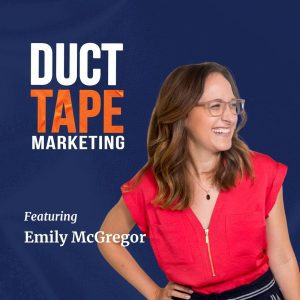The Truth About SEO, AI, and Content in 2025 written by John Jantsch read more at Duct Tape Marketing
The Duct Tape Marketing Podcast with Bruce Clay
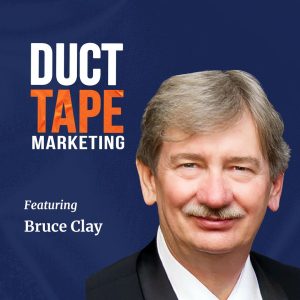 In this episode of the Duct Tape Marketing Podcast, I interviewed Bruce Clay, widely regarded as the “Father of SEO.” With a career spanning nearly three decades, Bruce has witnessed every major shift in search engine optimization—from the early days of simple keyword ranking to today’s AI-driven landscape.
In this episode of the Duct Tape Marketing Podcast, I interviewed Bruce Clay, widely regarded as the “Father of SEO.” With a career spanning nearly three decades, Bruce has witnessed every major shift in search engine optimization—from the early days of simple keyword ranking to today’s AI-driven landscape.
During our conversation, Bruce shared powerful insights into how Google ranking, AI-generated content, and SEO strategy are evolving in 2025. We discussed the impact of search engine algorithms, the role of content marketing, and why businesses must rethink their approach to website optimization and organic traffic.
SEO is changing fast, and Bruce Clay’s insights highlight why businesses must adapt or risk being left behind. Whether you’re an SEO consultant, marketer, or business owner, focusing on SEO strategy, usability, and high-quality content will be critical in 2025.
Chapters:
- [00:09] Introducing Bruce Clay
- [00:53] SEO in 1996
- [04:47] The Growing Importance of SEO
- [11:19] How to Create Quality Content for SEO
- [14:50] Is Zero-Click the End of SEO?
- [18:59] Guest Podcasting Can Help SEO
More About Bruce Clay:
Check out Bruce Clay’s Website
Connect with Bruce Clay on LinkedIn
This episode of the Duct Tape Marketing Podcast is brought to you by
 Want to elevate your marketing game? AdCritter pairs Connected TV ads with precise digital retargeting to drive real results. Discover how their full-funnel strategy can help your business grow smarter. Let them know Duct Tape Marketing sent you, and you’ll get a dollar-for-dollar match on your first campaign! Learn more at adcritter.com.
Want to elevate your marketing game? AdCritter pairs Connected TV ads with precise digital retargeting to drive real results. Discover how their full-funnel strategy can help your business grow smarter. Let them know Duct Tape Marketing sent you, and you’ll get a dollar-for-dollar match on your first campaign! Learn more at adcritter.com.
John Jantsch (00:01.26)
Hello and welcome to another episode of the Duct Tape Marketing Podcast. This is John Jantsch. My guest today is Bruce Clay. He is known professionally as the father of SEO. He’s been a world renowned expert in the field of SEO since 1996. A lot of people couldn’t spell SEO in 1996, probably, right? Bruce programmed the first webpage analysis tool. created the search engine relationship chart, which is earned
Bruce Clay (00:22.021)
.
John Jantsch (00:27.734)
over 300,000 or did earn over 300,000 downloads in its first month. He wrote and taught how to optimize websites to be found in search, establishing bruceclay.com as the trusted source for how-to information in the field of search engine optimization. So Bruce, welcome to the show.
Bruce Clay (00:46.083)
Thank you very much. Glad to be here.
John Jantsch (00:48.174)
So I would ask you to tell me about your history in involvement in SEO, but that would take the whole show probably, right? So let’s just start with, what was kind of the kernel of SEO? Like 1996, a lot of people didn’t have websites. So what did SEO look like when you first got started?
Bruce Clay (01:07.333)
Let me give you a little bit of background. My background is programming. You know, I have one of these degrees in math and computer science, but I also have an MBA. So I was looking for something that was marketing, but programming and a long-term search, which is an algorithm.
John Jantsch (01:16.302)
Mm.
Bruce Clay (01:32.823)
So that’s what really attracted me to it in its entirety. I got in, programmed some stuff, came up with some of the first tools, and started doing optimization. I have a background in mainframe optimization, so I just moved it over and started optimizing web pages. And they were
John Jantsch (01:51.512)
Yeah, okay.
Bruce Clay (02:00.889)
You know, I was trying to become a consultant, right? And consultants name the company after them and they do consulting and that’s what consultants do, right? And there weren’t a lot of people that were really aware of the power of marketing online, but a lot of companies had websites. They were catching on.
John Jantsch (02:11.736)
Yeah. Right.
Bruce Clay (02:28.325)
If we remember back to 1996, that was when Al Gore invented the internet, right? I mean, the hype was started. This is where you got to be. And a few people. And by the way, I was being found not because people knew to use a search engine to find me, but I was high activity in newsletters. Right? So.
John Jantsch (02:33.762)
Right.
Yeah, yeah.
John Jantsch (02:54.979)
Yeah.
Bruce Clay (02:58.223)
People who would stumble into a newsletter would find some of my articles and then they would call me. And the original websites were small, let’s face it. mean, now there’s thousands of pages, but back then, you you get a 50 page website, it’s pretty good size.
John Jantsch (03:12.654)
yeah. Yeah.
John Jantsch (03:19.246)
Well, they were kind of brochure aware, you know, is how people kind of looked at him. So it was like, need, we need to put our products on there and how do people contact us? And that’s it. Yeah.
Bruce Clay (03:28.941)
Yeah. And quite frankly, that was my website. And when I think back about it, it was so weird because there were no rules. Right. And my very first website, the home page had a logo, had a paragraph about what we do, and then a paragraph about the main topics of the website. And those paragraphs were my only navigation.
John Jantsch (03:32.312)
Sure, it was everybody’s first one.
John Jantsch (03:37.795)
Yeah, yeah.
John Jantsch (03:58.584)
Yeah. Right, right, right.
Bruce Clay (03:59.277)
I didn’t have navigation across the top or down the side. You go in, you read the paragraph, you click, you go into that section. And when I think back about
John Jantsch (04:07.128)
Well, please tell me you had a sign my guestbook link on there somewhere so you could capture an email, right?
Bruce Clay (04:15.073)
No, I wasn’t even doing that. I mean, was, I’m, my philosophy for many, many years is I answer questions until they surrender. I gave away everything, all the information I could. But people who wanted to rank, that was why they called me. And they contacted me by email, because my email was in the footer, our phone number.
And the very first day, it was Wild West. mean, it was there were no rules. Right. This is three years before Google.
John Jantsch (04:56.535)
All right.
Bruce Clay (04:57.965)
I mean, Excite, AltaVista, Infoseek, I mean…
John Jantsch (05:00.12)
Yeah, yeah, yeah. AOL, AOL was in there already, I think even.
Bruce Clay (05:03.247)
This is back in 96. In 96, we were still on motive.
John Jantsch (05:09.198)
Yeah, yeah, sure. All right, well, let’s fast forward. We’ll go back and forth a little bit here, but I would say 2005. I’m going to pin it there, maybe beyond that, but not only were websites very prevalent, know, blogging had come on the scene. You and I were talking about podcasting. I started my podcast in 2005.
Bruce Clay (05:11.503)
So…
John Jantsch (05:35.82)
And certainly SEO had become really a significant marketing channel and practice. mean, you had SEO firms that that’s all they did. talk a little bit about, you know, maybe how important SEO had become at that point. I’m going to fast forward to where we are today, but say, you know, 20 years ago, how important it become and, you know, how people were winning.
Bruce Clay (06:04.229)
Well, there was no effective social media environment. There were newsletters and email. That’s always been here. But SEO on a bang for the buck was highly effective. Remember, for many years, even when Google started, it was just 10 blue links. They weren’t even promoting a lot of ad sales.
John Jantsch (06:29.23)
Sure. Yeah, yeah, of course.
Bruce Clay (06:34.309)
it was, it was very weird. advertising online was just getting going on a lot of environments. but for traffic purposes, it was really, you had SEO and, it was common to have, because Google came out in, 98, 99.
PageRank promoted a lot of people to do links. So there was a lot of early stage spam that were out, they were buying links. There’s no such thing as a bad link. Every link counts, you know, one of those kinds of things. And in fact, was whoever dies with the most links wins. And quality didn’t matter and sentiment didn’t matter. I could say I hate you or I love you and it’s
still page rank. So it was pretty wild at those early stages. If you fast forward to today, Google has exactly the opposite. They only count your best links and the rest are ignored. Going out and getting more links is usually a waste because they’re not going to be the best. And if they’re not the best, Google doesn’t need them.
John Jantsch (07:50.595)
Right.
John Jantsch (07:58.275)
Yeah.
Bruce Clay (08:02.497)
My speculation is Google only uses 20 % of your links and then they only use the ones that are recent. Freshness of your link inventory counts. So yeah, what was going back then for PageRank and manipulation and spamming, those days are long gone. So the actual SEO has changed.
John Jantsch (08:27.138)
Yeah, well, I would say 15 years ago, so moving up a little further forward, all of sudden content became everything. know, people, more content, blog content, know-how content, you know, to the point where it became ridiculous, but it still became a huge, you couldn’t do SEO without new volumes of content.
Bruce Clay (08:50.989)
And that is especially true today. However, the usability of the content has changed dramatically. And you see, I mean, I’m in the same boat as everybody else. We have clients that come to us and say, I just need content. And the answer is more of the same doesn’t help. Let me help the listeners.
If I want to rank for Mouse.
Doing 20 pages on the keyword of mouse is counterproductive and actually hurts your ranking. What you need to do is build a hierarchy of mouse and then the types of mice and et cetera. You build a content expertise and the quality of each page is why the search engine wants you. But having 20 of them on mouse
is not going to help you. also, if you have a lot of pages on information that’s 20 years old, that doesn’t help you. Classic example. I had 6,000 pages on my website. But early on, I would go to conferences, and we would, I’d have a team go, and we would live blog sessions.
John Jantsch (10:24.14)
Yep.
Bruce Clay (10:25.029)
which were great and we’d have links from the people who were speaking and it was wonderful. However, live blogging a session from 2004 on SEO does no good today.
John Jantsch (10:38.91)
A little bit irrelevant, right?
Bruce Clay (10:40.677)
That’s not relevant. And so I went through a process. cut out, I’m down 1800 blog pages, which by the way, still a lot, compared to 4,000, I mean, I had a ton of pages that I cut off my site. And so it isn’t an issue of quantity. It actually turns out that the current issue is the quality of your page.
John Jantsch (10:49.998)
Yeah, sure.
Bruce Clay (11:10.997)
and the fact that you only have one of them. And so you gotta build a hierarchy, you gotta understand architecture, gotta understand how to build it. And now along comes AI. And I can generate a thousand pages a day. And I mean, it’s crazy because those pages are terrible.
John Jantsch (11:32.826)
So let’s talk a little bit about, mentioned the word quality and I think everybody gets that. It’s like that phrase, quality over quantity, everybody gets that fundamentally, how do you, what does quality mean? I know Google tries to give like the EAT guidelines and things like that, but like how should somebody who’s trying to promote their business go about thinking about creating a quality page or quality content?
Bruce Clay (11:57.957)
think that, well, you would look at the Google Quality Rater Guidelines. It’s 160 pages. And you would go through that. And Google does a moderately good job of defining quality. That’s where they’ve defined the EEAT definitions and things like that. However, Google.
also has usability, which isn’t really well defined anywhere. I mean, what makes a page useful? I mean, little things that a site wouldn’t do are usability factors. For instance, do I have jump links at the top of the page? That’s clearly a usability factor. It’s not so much an SEO factor. Do I have breadcrumbs? Clearly a usability factor.
Do I have search on the page? A usability factor, right? Are my links easily seen? A usability factor. And all of those things are also part of what causes you to rank. And I can look at my keywords and do I have them in the right tags and am I running a schema and do I define things correctly?
but that has little to do with is it usable? I mean, okay, I have the keyword in there too many times. I’m a spammer, but that isn’t usable, right? It doesn’t affect usability and usability is an external factor now. So sites that used to rank number one and vanish, that page isn’t less content-wise, less valuable. It’s a
John Jantsch (13:40.077)
Yeah.
Bruce Clay (13:53.817)
The standards have changed. And now usability is a big factor. AI. When AI came out, and I want to mention this, AI came out and originally Google said it has to be human created. Then they changed it. Actual on their website, they changed it to where it has to be useful to humans. Right? Which is a good factor. I think it’s great.
John Jantsch (13:55.331)
Yeah.
John Jantsch (14:17.474)
Yeah.
Bruce Clay (14:23.609)
However, it was interpreted that AI is okay. And our tests show that if we have a bunch of pages, AI will always be last among equals.
And Google has now got a statement out that says, what we expect of your page is that it is consistent with common knowledge and creates new knowledge. Right? They sound a little diametrically opposed, but, and it’s because the LLM is built based upon common knowledge and consensus. But
John Jantsch (14:55.448)
Yeah.
Bruce Clay (15:06.015)
they’re expecting the human touch to be, and this is my creativity component. And how it’s going to work in the future is something else. But those factors, other than just usability, affect how you rank.
John Jantsch (15:23.63)
So you mentioned earlier the idea of the original Google home screen had the 10 links and nothing else on it. Well, now it’s a shopping mall, right? It’s got all kinds of ads on it. It’s got things for like local, for maps. It’s got organic stuff. It’s got the AI overview. So a lot of people today are screaming about this whole zero click thing is the end of SEO. I’m curious where you stand on that sort of extreme.
mentality.
Bruce Clay (15:54.681)
Well, yeah, that is somewhat extreme because, and wrong. If you want to rank in social, you participate in social and you have your followers. If you want to rank in organic, you qualify based upon the SEO components that allow you to rank in organic. If you want to rank in AI, right, it isn’t
really so much the social component about who you are. And it isn’t the SEO component about who you are. When a consensus is built, individuals are lost. It’s collective information, right? The problem is that the LLM doesn’t go out and spy their websites and chase links or worry about canonicals or
care about your schemas. What it does is it gathers all this information, puts it into an LLM. Now it keeps track of sites, but it’s really consensus information. If you look at search for chat GPT, in order to qualify to be in their search results, they rely on Bing to have previously said,
You’re a trusted site.
John Jantsch (17:24.226)
Right.
Bruce Clay (17:26.549)
AIO requires that Google has you near the top of the results so that they know you’re not a spammer, you’re a trusted site. And then those trusted sites are aggregated to form their results. So the LLM really has the search component as a filter. And that means that you still have to do SEO.
John Jantsch (17:35.928)
Right.
John Jantsch (17:48.972)
Yeah. Yeah. Yeah. Yeah. Yeah. So, so if I can maybe summarize that a little bit, your, keywords or keyword phrases that you’re ranking for today, highly, probably makes it more likely that you’re going to start seeing some chat GPT traffic, for example, for, for, for similar searches. Yeah.
Bruce Clay (18:08.453)
You could very well. Right, now the chat, using chat GPT or AIO, either one, they’re question-based. They’re typically information rather than transactional. And we have written a lot of tools. We have a product called Prerider. And what it does is it analyzes the intent of the page.
And then the intent of the competition and matches them. Right. So you find that intent is important. All this stuff is very, important. But what triggers all that, and this is a very complex world, what triggers it is, is it a question, a how question? And about 16 % of all searches in the Google world are how.
John Jantsch (18:45.72)
Yeah, sure.
Bruce Clay (19:07.663)
So that’s what triggers the AIO. That means that my website has to answer questions. It means that my website to be an AIO has to have an informational bias, right? Transactional sites are harder to have an AIO even show up. So information, how do I do this type query?
John Jantsch (19:29.89)
Yeah.
Bruce Clay (19:37.059)
That is really the trigger. So I have to have a website that qualifies for the question being asked of the chat world.
John Jantsch (19:47.608)
Yeah, sure. Yep. So I’ve got one final question. You’re on this podcast and I’ve always on top of hosting a podcast, actually also am part owner in a podcast booking service. We book a lot of our clients on those and I tell people all the time that being a guest on a podcast is a great, well,
You get exposure, you get content, you get backlinks. I’m curious how you think about, know, cause we, we went through that period where everybody did guest blogging and that stuff just got buried. And I’ve really trying to preach people guest podcasting. So I’m curious your take on that. Do you see that as a strong SEO play still?
Bruce Clay (20:33.677)
I think that podcasts are a massive play. Now, so I’ll come up with the next level. It turns out that since AI is all question-based and because they are not doing searches and establishing all this stuff, they’re relying on the search engines.
mentions are really important. And I think that podcasts are one of the best PR components that there is right now. I’m on a podcast. I believe the podcasts are going to be massive. They are exactly what the doctor ordered in order to get what’s referred to as mentions.
John Jantsch (21:04.174)
Yeah, yep.
John Jantsch (21:18.274)
Right.
Bruce Clay (21:30.245)
And I think that in the AI world, the brand mention is, is dominant. Rand Fishkin just did a session that I watched and he emphasized that a lot of his traffic is from brand mentions of his name associated with certain words and it causes him to get traffic. And I think that.
John Jantsch (21:50.542)
Yep. Yeah.
Bruce Clay (21:59.311)
There’s a lot of people who are concerned about with AIO, you might get less traffic from organic results. I also believe that podcasts and YouTube and all these other mechanisms out there are very, important. And you have to be there. If you’re not there in a year from now, you’re going to be really sad.
John Jantsch (22:23.694)
Yeah. Yeah.
John Jantsch (22:29.1)
Yeah, you’re speaking my language. Well, Bruce, I appreciate you taking a moment to drop by the Duct Tape Marketing Podcast. Where would you invite people to find out more about your work and connect with you?
Bruce Clay (22:41.199)
Well, my website, as I said, I’m a consultant, right? brucoclay.com. It was rather nice and easy to get at the time. brucoclay.com. And then I have other websites that link from there. seotraining.com, seotools.com. Great names, right? And Free Rider, I’ve got others, but brucoclay.com is the best way to reach me.
John Jantsch (22:44.49)
Right. Yeah.
John Jantsch (22:50.432)
Sure, man.
John Jantsch (22:59.776)
Yeah, yeah, yeah.
Yeah. Awesome. Well, I appreciate that. I did the same thing. I started my company was Jantz Communications, consulting, right? Before I went to Duct Tape Marketing. So I get it. Again, I appreciate you stopping by and hopefully we’ll run into you one of these days out there on the road.
Bruce Clay (23:19.159)
Okay, great, thank you.
Sign up to receive email updates
Enter your name and email address below and I’ll send you periodic updates about the podcast.
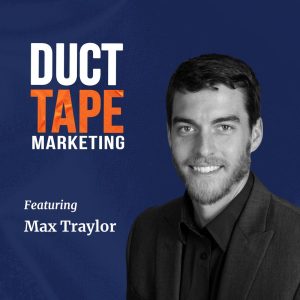
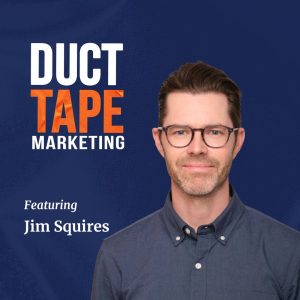 In this episode of the
In this episode of the 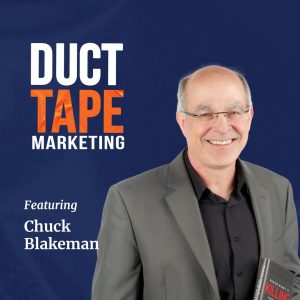
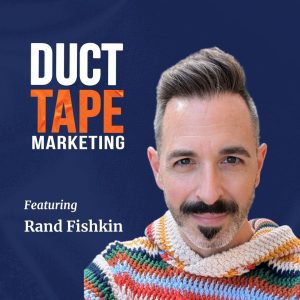 In this episode of the
In this episode of the 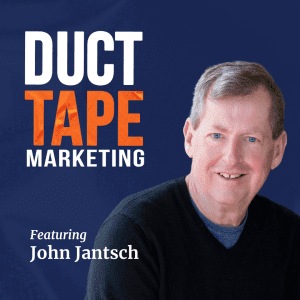
 In this episode of the Duct Tape Marketing Podcast, Sara Nay steps in as host to interview Jane McCarthy, a seasoned brand strategist and author of The Goddess Guide to Branding. Jane specializes in helping female entrepreneurs develop authentic, compelling brand identities through the power of goddess archetypes. Drawing from Carl Jung archetypes, she has created a branding framework that enables businesses to connect emotionally with their audience while maintaining a strong brand positioning.
In this episode of the Duct Tape Marketing Podcast, Sara Nay steps in as host to interview Jane McCarthy, a seasoned brand strategist and author of The Goddess Guide to Branding. Jane specializes in helping female entrepreneurs develop authentic, compelling brand identities through the power of goddess archetypes. Drawing from Carl Jung archetypes, she has created a branding framework that enables businesses to connect emotionally with their audience while maintaining a strong brand positioning.
 In this episode of the Duct Tape Marketing Podcast, I interviewed David Garfinkel, a copywriting expert and author of The Persuasion Story Code. David is widely regarded as one of the top authorities on persuasive communication, storytelling in marketing, and direct response marketing. His expertise lies in helping businesses, marketers, and entrepreneurs craft compelling messages that drive sales conversion and customer engagement through effective storytelling.
In this episode of the Duct Tape Marketing Podcast, I interviewed David Garfinkel, a copywriting expert and author of The Persuasion Story Code. David is widely regarded as one of the top authorities on persuasive communication, storytelling in marketing, and direct response marketing. His expertise lies in helping businesses, marketers, and entrepreneurs craft compelling messages that drive sales conversion and customer engagement through effective storytelling.